Jewish Heritage Europe: Anniversary of Anniversaries: Bratislava
Bratislava — 20th Anniversary of the Chatam Sofer Memorial; 10th Anniversary of the Jewish Community Museum
14/06/2022 | Na stronie od 14/06/2022
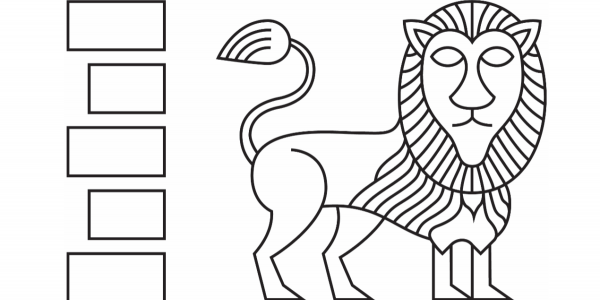
Jewish Heritage Europe logo
Source: Jewish Heritage Europe
Posted in: Anniversaries, Exhibitions, Jewish cemeteries, Memorials & Monuments, Museums, Synagogues, Tourism & Genealogy (general)
"The year 2022 marks the 10th anniversary of Jewish Heritage Europe, and we will be celebrating it throughout the year with special content. The theme of JHE’s 10th birthday celebrations is the “Anniversary of Anniversaries” — that is, using JHE’s own anniversary to feature other significant or …""
Tagged: Slovakia
Posted on: June 13, 2022
The year 2022 marks the 10th anniversary of Jewish Heritage Europe, and we will be celebrating it throughout the year with special content.
The theme of JHE’s 10th birthday celebrations is the “Anniversary of Anniversaries” — that is, using JHE’s own anniversary to feature other significant or symbolic anniversaries related to Jewish heritage that also take place this year.
In this post, we mark the anniversaries of two Jewish heritage sites in Bratislava — the 20th anniversary of the Chatam Sofer Memorial compound, and the 10th anniversary of the city’s Jewish Community Museum.
Both sites form part of a rich complex of Jewish heritage in the Slovak capital that comprises memorial, educational, and cultural spaces that are integrated with the life of an active Jewish community.

The Chatam Sofer Memorial — 2002.
The memorial, dedicated in 2002, comprises the underground remnants of the city’s Old Jewish Cemetery, which was destroyed in World War II to build a tunnel. It comprises nearly two dozen graves including the tomb of the revered Rabbi Moshe Schreiber, known as the Chatam Sofer (or Chasam Sofer), a leading orthodox authority who lived from 1762 to 1839, and seven other prominent rabbis. The Chatam Sofer became chief rabbi in Bratislav in 1806.
As the Memorial’s web site states:
Sofer remained in this post for 33 years; he served as av beth din (chief judge of the rabbinical court) and became one of the most respected authorities in Halakhah (Jewish law). About 1200 responsa, or rabbinical rulings, were published posthumously and many of them even today are basic reading for rabbinical students.
The Old Jewish Cemetery was established near the bank of the Danube river in the 1690s and served as Bratislava’s main Jewish cemetery until 1847. It was demolished during WW2 in 1942-43, when the tunnel was built near the site.

Archival photo, encasing the Chatam Sofer tomb compound during World War II
The matzevot were removed, and most of the graves were exhumed and reburied in a mass grave in the orthodox cemetery. Only 23 tombs were preserved at the site, including that of the Chatam Sofer. Encased in a concrete shell and covered over, these remained intact under the surface, and even in communist times were a site of pilgrimage.
The Memorial’s web site states:
For Bratislava residents, the site evoked a mysterious Jewish presence in a period when Jewish heritage was not valued by the authorities and two Bratislava synagogues and the entire old Jewish neighborhood were razed. In 1982, the tramline was built and a tram stop was established over the compound.
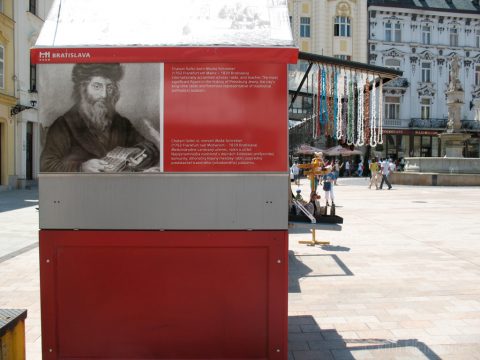
The image of the Chatam Sofer on a souvenir kiosk in Bratislava
In 2000-2022, the matzevot were restored and the new Memorial conserving the site, designed by the architect Martin Kvasnica, was constructed.
The former cemetery compound was delineated (and later fenced off) after the tram tracks were relocated by the municipality.
The redevelopment project was initiated by the New York-based International Committee for the Preservation of Gravesites of Gaonai Pressburg, an organization headed by Mr. Romi Cohn that included prominent Orthodox authorities. The project would not have been possible without the cooperation and support of the Bratislava Municipality and Mayor Jozef Moravcik. The project was coordinated by Dr. Peter Salner, the president of the Bratislava Jewish Community, which owns the site, and the building works were supervised by Mr. Gershon Turm from Israel.
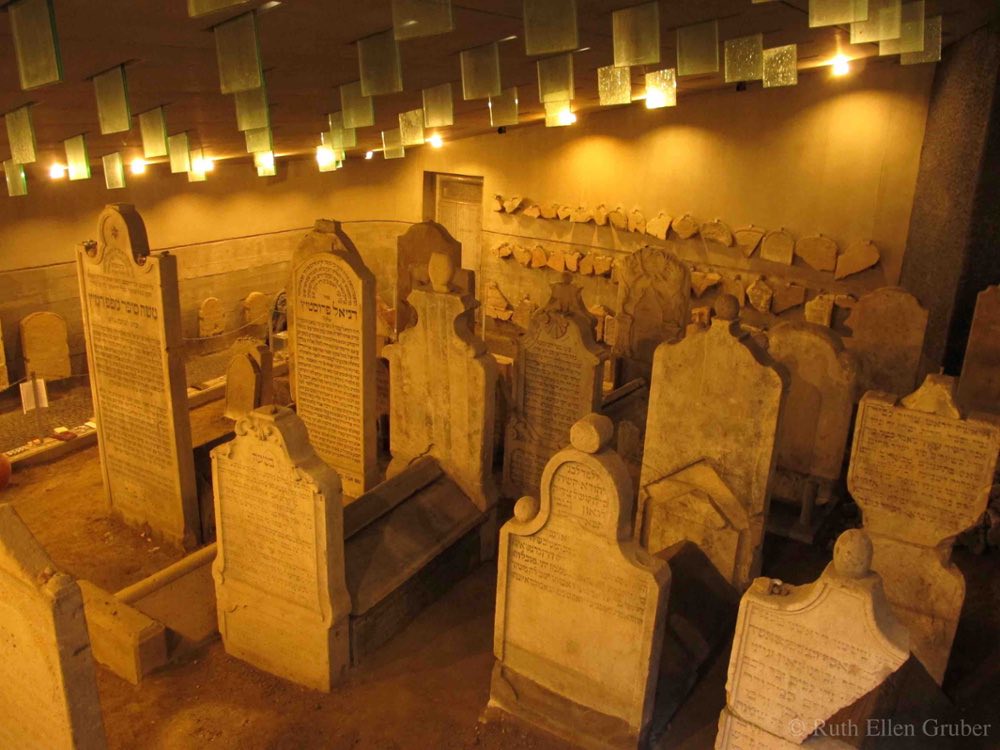
The Chatam Sofer mausoleum, Bratislava
The Memorial compound was designed to conform to Halakhah, for example providing a place where Cohanim (prohibited from entering cemeteries) can observe the site without entering the cemetery area. It also provides ample space for prayer
Visitors access the site via a raised platform, which is elevated above the cemetery grounds. After passing through an evocative black entry corridor structure, they enter the visitors’ hall, followed by a prayer hall for Cohanim. Only then can they descend into the main cemetery space, where the graves of the Chatam Sofer and the other prominent rabbis are located.
The site is on the Slovak Jewish Heritage Route.
Watch a YouTube video about the memorial compound:
Aside from the graves conserved in the Chatam Sofer complex, the matzevot from the Old Cemetery were all presumed to have been lost or destroyed.
But — as we wrote last year — hundreds of them, dating mainly from the 18th to the early 19th century, were recently found piled up in a neglected and heavily overgrown area near a far wall of the city’s active orthodox Jewish cemetery, where they apparently had lain undisturbed for nearly 80 years.
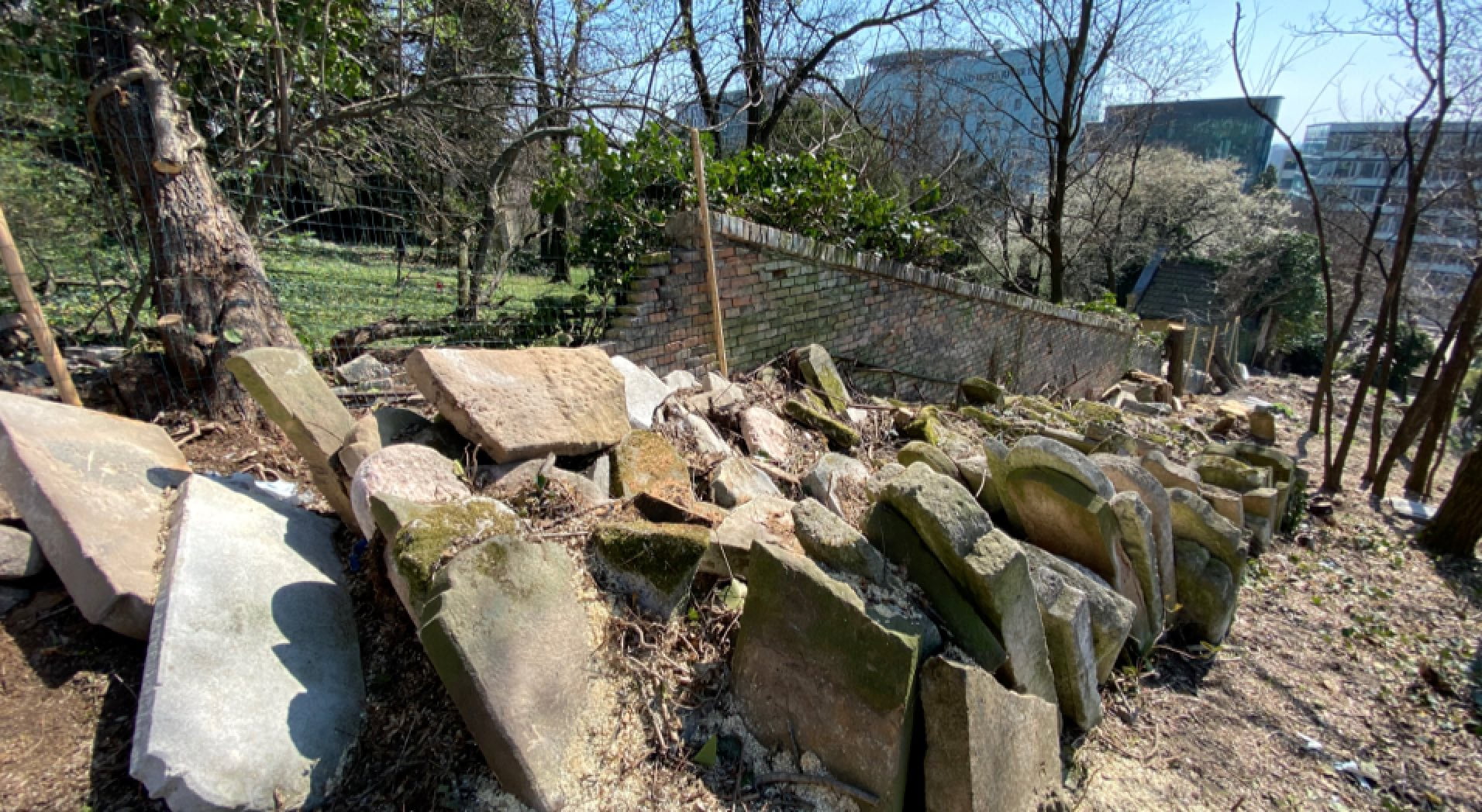
Web site of the Chatam Sofer Memorial
The Jewish Community Museum — opened June 17, 2012
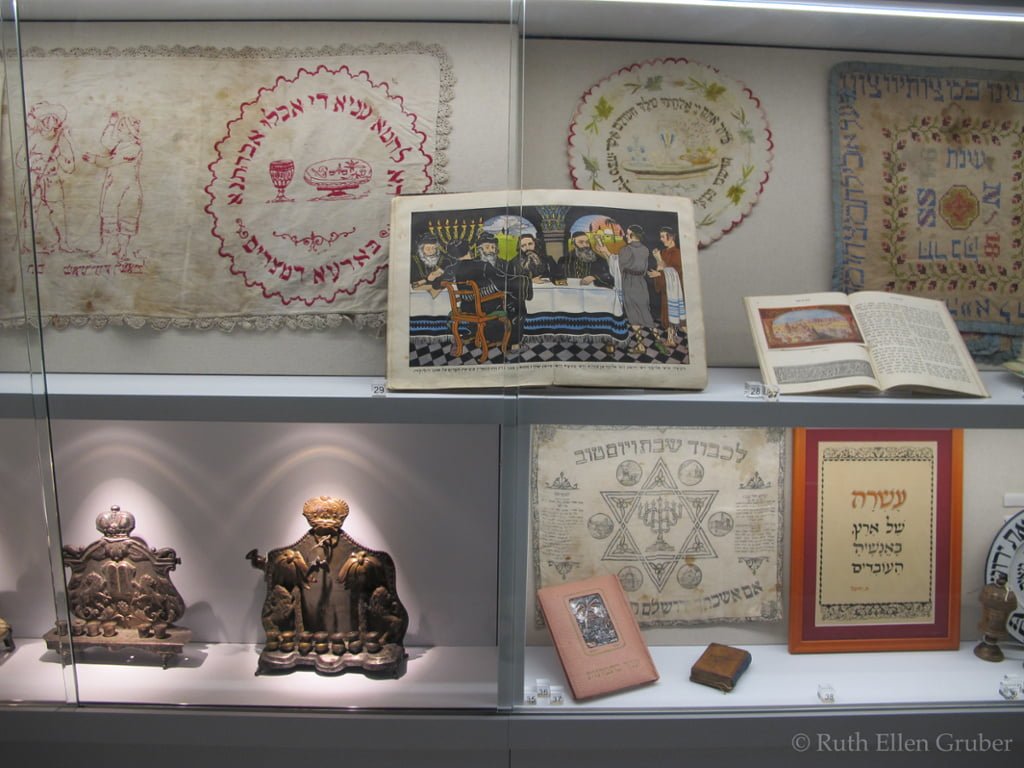
Items in the Jewish Commmunity Museum, Bratislava
The museum is located in the women’s gallery of the Jewish community’s active synagogue on Heydukova Street — the only synagogue in Bratislava to have survived the Holocaust and/or post-war destruction under the communist regime. It was designed by the Bratislava-based Jewish architect Artur Szalatnai and completed in 1926. The museum provides an overlook into the sanctuary, whose design includes striking cubist and art deco elements.
Exhibits include key items from the Judaica collection of the Jewish community as well as other objects – some of them associated with the Holocaust – donated by individual community members.

As the wall panels (in Slovak and English) state, the exhibit uses a few selected objects from the Jewish community’s collections to tell the centuries-old story of Jews in Bratislava. It is anchored, thus, in the community and in this way forms a complement to the “general” state-run Museum of Jewish Culture, which is a branch of the Slovak National Museum.
Though the museum occupies a relatively small space, its design and well conceived structure make it seem much larger.
The permanent exhibits are arranged in a larger main hall, and a narrow side corridor. Both open on to the sanctuary of the synagogue, so the synagogue thus forms part of the exhibit.

Interior, Heydukova st. synagogue in Bratislava, Slovakia
The museum logo is taken from the design of the windows of the synagogue.
As the museum web site states:
The exhibition concept reflects the fact that the synagogue is still in use as the only Jewish house of worship in Bratislava. The main “exhibit” is thus the synagogue itself. Visitors are able to explore the sanctuary, and the items of Judaica on display are exhibited within the authentic environment for which they were created – the synagogue.
The permanent exhibit has several sections.
– In The Main Hall. Four main themes are presented – Community, Rabbis, Education and Synagogues. In addition, a Holocaust memorial wall presents objects related to the Holocaust, including the deportations, hiding and resistance. The objects have been donated to the exhibition by community members. There is a showcase devoted to objects specifically related to the post-war communist experience and the renaissance of Bratislava Jewish life after the fall of communism.
– Judaica Corridor. Located along the western gallery, this space houses the main objects from the Second Barkany Collection, put together after World War II by the architect Eugen Barkany. They were originally kept in the Bratislava Neolog synagogue that was demolished in 1969.
There are also spaces dedicated to special exhibitions — an exhibition marking the 20th anniversary of the Chatam Sofer Memorial compound opened June 10 and runs until October 9.
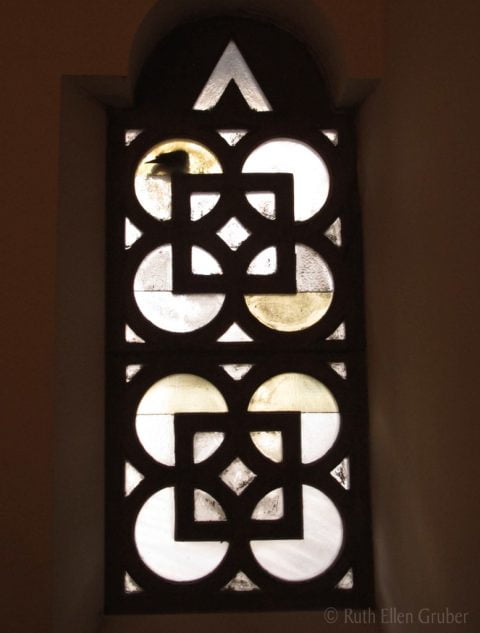
Windows that inspired the logo of the Bratislava Jewish community museum